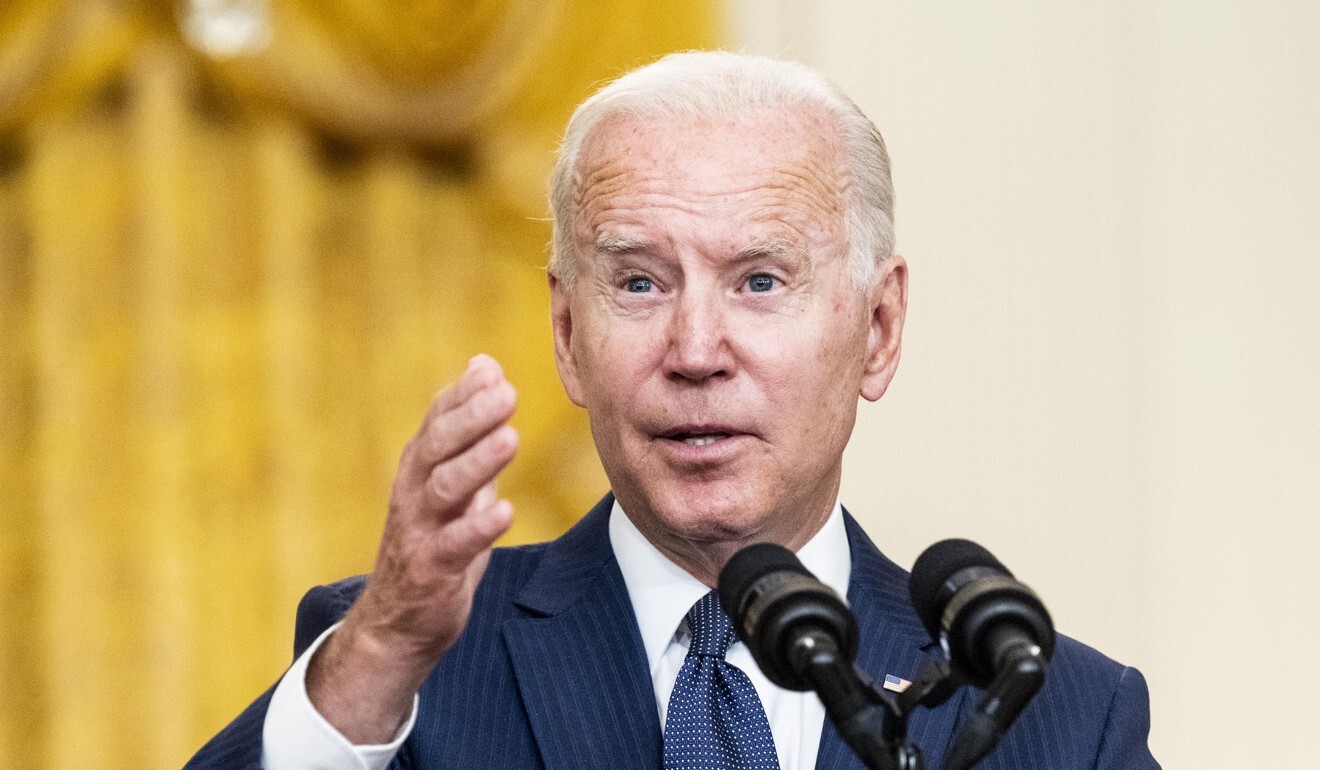
US investigation of Covid-19 origins fails to reach conclusive assessment
- Analysts determining Covid-19’s origins remain divided on whether the virus came from a lab leak or jumped from animal reservoir to humans naturally
- President Biden issues a statement after the unclassified report is released that he will press China for more data on the early Covid-19 cases
While dismissing the possibility that Sars-CoV-2 was developed as a biological weapon, intelligence community (IC) analysts trying to determine Covid-19’s origins remained divided about whether the virus came from a lab leak or jumped from an animal reservoir to humans naturally.
Four IC “elements” leaned towards animal-to-human, also known as zoonotic, transmission as most likely, with “low confidence” in that assessment.
One element determined that “the first human infection … most likely was the result of a laboratory-associated incident, probably involving experimentation, animal handling, or sampling by the Wuhan Institute of Virology (WIV)”. That assessment was made “with moderate confidence”.

01:53
India records lowest number of coronavirus cases in 160 days
Analysts at three IC elements “remain unable to coalesce around either explanation without additional information, with some analysts favouring natural origin, others a laboratory origin, and some seeing the hypotheses as equally likely”, according to the summary.
The IC assessment that the virus was “not developed as a biological weapon” counters a theory that had been circulating as early as last year and raised by figures such as Republican Senator Tom Cotton. Most agencies assess with “low confidence” that the virus probably was not genetically engineered; however, two agencies believe there was not sufficient evidence to make an assessment either way.
The assessment also found China’s officials did not have previous knowledge of the virus before the initial outbreak of Covid-19 emerged.
The Chinese embassy in the United States said in a statement: “The intelligence department has not come up with the concrete answer the US government has wanted. Any effort to continue is doomed to be in vain because the investigation is based on fabrications and it is anti-scientific.”
It also repeated the demand that the World Health Organization should investigate the US military base Fort Detrick, a counter narrative Beijing has increasingly promoted as it seeks to turn the spotlight away from China.
Coronavirus: China recommends booster shots for high-risk groups
While accusing Beijing of stifling efforts to understand how the coronavirus began spreading, Biden did not say whether the widely anticipated three-month investigation had reached any conclusions or specifically what data is required in the effort.
“Critical information about the origins of this pandemic exists in the People’s Republic of China, yet from the beginning, government officials in China have worked to prevent international investigators and members of the global public health community from accessing it,” the US leader said.
“The United States will continue working with like-minded partners around the world to press the PRC to fully share information and to cooperate with the World Health Organization’s phase two evidence-based, expert-led determination into the origins of Covid-19 – including by providing access to all relevant data and evidence,” he added.

Yanzhong Huang, director of the Centre for Global Health Studies at Seton Hall University in New Jersey, said that while the Chinese side tended to think the intelligence investigation was politically motivated, the key takeaways of this report produced “little evidence suggesting that this is politically motivated,” he said, pointing to the dissenting voices in the intelligence community and the finding that Chinese officials were not aware of the virus before the initial outbreak.
However, he added, “given that the intelligence community failed to draw any definitive conclusions on the origin issue, it only highlighted the urgency for conducting in-country investigation in China and also the importance of Chinese cooperation on that matter”.
This could lead to further calls for transparency and cooperation from China for a second-phase, in-depth, in-country investigation, he said.
12 months on, many patients in Wuhan find their Covid-19 symptoms persist
Daniel Lucey, an infectious disease specialist at Georgetown University, called the finding that the virus was not a bioweapon and the assessment from most agencies that it was probably not genetically engineered “very important statements” for the American intelligence community to come out and make.
He said that the analysis about genetic engineering was likely based on looking at existing genetic sequences as well as publications from China and elsewhere about lab work that could result in the modifications of similar viruses.
The low-confidence assessment from most agencies that the virus “probably was not genetically engineered” fits with previous analysis put forward by leading evolutionary biologists and geneticists, who typically cited the diversity of bat coronaviruses and their tendency for natural recombination, as well as the lack of any known existing genetic “backbone” that could have been used to construct the Covid-19 virus, as key evidence supporting its natural emergence.

But Lucey said that gaining more clarity about the origins of the virus would depend on the scientific or intelligence communities gaining more information about cases earlier than the ones outlined in the joint WHO-China reporting following the phase one mission and what their exposures were.
He also noted the declassified brief included no mention of the several researchers inside WIV that the State Department under the Trump administration believed had fallen ill during the autumn of 2019 – a charge that the lab has denied.
“There‘s nothing new here, so I’m not surprised whatsoever that they still came down to ‘on the one hand’ and ‘on the other hand’ hypotheses for an animal- or lab-related incident,” he said.
Additional reporting by Josephine Ma


